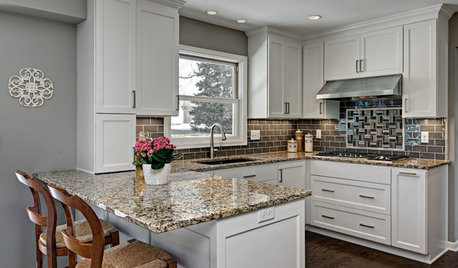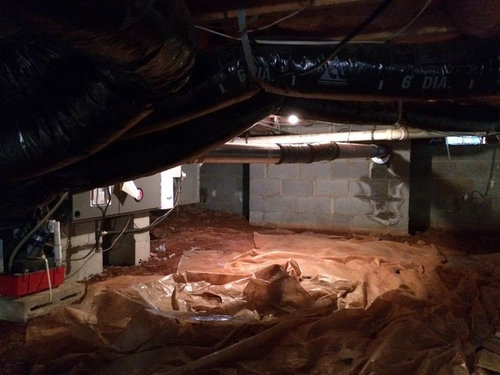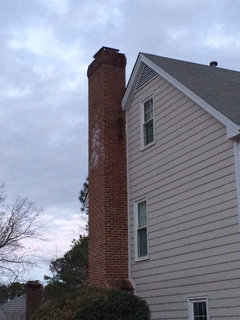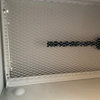Furnace Vent Condensation Concerns
BTooth
10 years ago
Featured Answer
Comments (25)
cindywhitall
10 years agolast modified: 9 years agoBTooth
10 years agolast modified: 9 years agoRelated Professionals
Emeryville Solar Energy Systems · Freeport Solar Energy Systems · Norwich Solar Energy Systems · Pacific Grove Solar Energy Systems · Prunedale Solar Energy Systems · Whitman Solar Energy Systems · Wildomar Solar Energy Systems · Western Springs Solar Energy Systems · Baltimore Home Automation & Home Media · Castle Rock Home Automation & Home Media · La Crescenta-Montrose Home Automation & Home Media · Lewisville Home Automation & Home Media · San Jose Home Automation & Home Media · Springville Home Automation & Home Media · St. Johns Home Automation & Home Mediamike_home
10 years agolast modified: 9 years agoBTooth
10 years agolast modified: 9 years agocindywhitall
10 years agolast modified: 9 years agobig_al_41
10 years agolast modified: 9 years agoBTooth
10 years agolast modified: 9 years agomike_home
10 years agolast modified: 9 years agoBTooth
10 years agolast modified: 9 years agojackfre
10 years agolast modified: 9 years agoSaltiDawg
10 years agolast modified: 9 years agoBTooth
10 years agolast modified: 9 years agoBTooth
10 years agolast modified: 9 years agomike_home
10 years agolast modified: 9 years agoBTooth
10 years agolast modified: 9 years agojackfre
10 years agolast modified: 9 years agoBTooth
10 years agolast modified: 9 years agomike_home
10 years agolast modified: 9 years agoBTooth
10 years agolast modified: 9 years agojackfre
10 years agolast modified: 9 years agoBTooth
10 years agolast modified: 9 years agomike_home
10 years agolast modified: 9 years agojackfre
10 years agolast modified: 9 years agoBTooth
10 years agolast modified: 9 years ago
Related Stories

HOUSEKEEPING10 Problems Your House May Be Trying to Show You
Ignore some of these signs and you may end up with major issues. We tell you which are normal and which are cause for concern
Full Story
HEALTHY HOMEGet Cleaner Indoor Air Without Opening a Window
Mechanical ventilation can actually be better for your home than the natural kind. Find out the whys and hows here
Full Story
DECORATING GUIDES10 Ways to Hide That Air Conditioner
Feeling boxed in designing around your mini-split air conditioner? Try one of these clever disguises and distractions
Full Story
BEFORE AND AFTERSSmall Kitchen Gets a Fresher Look and Better Function
A Minnesota family’s kitchen goes from dark and cramped to bright and warm, with good flow and lots of storage
Full Story
KITCHEN APPLIANCESLove to Cook? You Need a Fan. Find the Right Kind for You
Don't send budget dollars up in smoke when you need new kitchen ventilation. Here are 9 top types to consider
Full Story
LAUNDRY ROOMSThe Cure for Houzz Envy: Laundry Room Touches Anyone Can Do
Make fluffing and folding more enjoyable by borrowing these ideas from beautifully designed laundry rooms
Full Story
HEALTHY HOMEWhat to Know About Controlling Dust During Remodeling
You can't eliminate dust during construction, but there are ways to contain and remove as much of it as possible
Full Story
MOST POPULAR5 Remodels That Make Good Resale Value Sense — and 5 That Don’t
Find out which projects offer the best return on your investment dollars
Full Story
DOORS5 Questions to Ask Before Installing a Barn Door
Find out whether that barn door you love is the right solution for your space
Full Story
KITCHEN DESIGNHow to Choose the Right Hood Fan for Your Kitchen
Keep your kitchen clean and your home's air fresh by understanding all the options for ventilating via a hood fan
Full StoryMore Discussions









SaltiDawg